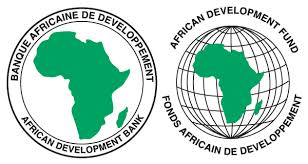THE disparity between lending and deposit rates in Zimbabwe is widening, dampening the already weak savings culture in the country and its economic recovery, the African Development Bank (AfDB) said.
In its latest economic review on Zimbabwe, AfDB said lending rates were higher for individuals than for corporates, with commercial banks charging an average of 15,08 percent for individuals and 10,40 percent for corporates. Merchant banks were charging an average of 17,93 percent for individuals and 17,76 percent for corporates.
Local financial institutions have maintained that the high interest rates are a result of the level of risk associated with offshore borrowing which has been expensive. The difference between lending and deposit rates is high compared to regional levels. The spread between lending and deposit rates for Namibia, Botswana and South Africa is said to be around five percent compared to 15 percent in Zimbabwe.
"Generally, there has been a decline in the average lending rates of commercial banks and an increase in merchant bank average lending rates, over the review period," said AfDB.
AfDB said the decline in average weighted lending rates for commercial banks was partially explained by the slowdown in the demand for credit and the adjustment in the loan book sizes of larger banks. The increase in merchant bank weighted average lending rates was likely explained by lack of competition in merchant banking sector.
"The decline in commercial lending rates is less likely to stimulate credit demand as banks are becoming conservative in their lending in light of higher non-performing loans of 15,95 percent as at 31 December 2013," AfDB said
In a bid to reduce average lending rates last year, government negotiated with banks to reduce their lending rates to levels below 10 percent per annum The agreement was however suspended before the end of the year after banks complained that the move had narrowed margins.
The Zimbabwean banking sector is characterised by liquidity challenges, which have made the cost of money expensive. Given the nature of bank deposits, which are currently short-term, bank deposits are skewed and the bulk of the corporates now place their funds on fixed term deposits.
Fixed deposits now attract high rates similar to those on the interbank market since there is no lender of last resort. This scenario renders the bulk of bank deposits to be relatively high since they are fixed compared to savings deposit rates. Banks still maintain high lending rates because the bulk of their deposits require a high rate on these fixed deposits.
The range for commercial banks' three-month deposit rates has been wide across banks, suggesting the banks' different capacities to reward depositors. Strong and weak banks have varying capacities to reward depositors and savers.
Banks' reputation and goodwill in the market varies, as do their willingness and capacity to attract new and quality customers. Saving rates vary widely across banks, suggesting the banks' differing abilities to reward savers. Given the need to boost funding for productive sectors, banks should still be encouraged to increase deposit and savings rates.
During the period under review, AfDB said annual growth in broad money supply (M3), defined as total banking sector deposits (net of interbank deposits), declined from 25,4 percent in December 2012 to 1,2 percent in December 20130.
"On a month-on-month basis, M3 growth increased from -3,7 percent in November 2013 to 3,3 percent in December 2013. The decline in annual M3 growth could be attributed to the general decline in economic activity," said AfDB.
Annual total banking sector deposits increased from $3,89 billion in December 2012 to $ 3,9 billion in December 2013. On a month-on-month basis, total banking sector deposits increased from $3,81 billion in November 2012 to $3,9 billion in December 2013.
- fingaz
 Concern over Masvingo black market
Concern over Masvingo black market  Kenya declares three days of mourning for Mugabe
Kenya declares three days of mourning for Mugabe  UK's Boris Johnson quits over Brexit stretegy
UK's Boris Johnson quits over Brexit stretegy  SecZim licences VFEX
SecZim licences VFEX  Zimbabwe abandons debt relief initiative
Zimbabwe abandons debt relief initiative  European Investment Bank warms up to Zimbabwe
European Investment Bank warms up to Zimbabwe  Young Investment Professional (YIP) Graduate Programme 2019
Young Investment Professional (YIP) Graduate Programme 2019 











 Young Investment Professional (YIP) Graduate Programme 2019
Young Investment Professional (YIP) Graduate Programme 2019
Editor's Pick